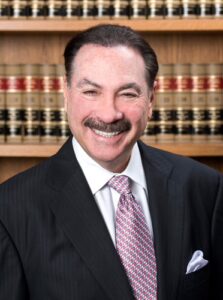
Howard Fensterman is an attorney and managing partner for the prestigious Abrams, Fensterman, LLP law firm in Lake Success, NY. He received his J.D. from Georgetown Law Center and has been admitted to practice in the states of New York, New Jersey, Maryland, and the District of Columbia.
Mr. Fensterman is the Co-Founder of Abrams Fensterman, LLP, and has overseen and guided every aspect of the firm’s expansion since its inception in 2000 with 13 attorneys on board. The firm currently includes over 170 attorneys in five offices throughout New York state. His vision turned Abrams Fensterman into one of the largest full-service law firms on Long Island, Westchester, and the largest in the history of Brooklyn.
Honors and Awards
Abrams Fensterman, under the leadership of Howard, sponsors numerous community events.
-
- On January 14th, 2025, Howard coordinated a meeting between New York City Mayor Eric Adams and Nassau County Executive Bruce Blakeman to discuss how to manage violent undocumented migrants who have come to both NYC and Nassau County, which borders the city.
- Howard was honored by Life’s WORC, a charitable organization that supports people with developmental disabilities and autism. Howard and famed journalist Geraldo Rivera attended the ceremonies at the Geraldo Rivera Golf Classic in Westbury, NY, in May 2024. Mr. Rivera also received an award.
- Howard was co-honoree at the 25th Annual We Care Fund Golf & Tennis Classic, hosted by the Nassau County Bar Association. The latest one was a walk for the Alzheimer’s Association on October 1st and 22nd, 2023, in Long Island, New York.
- In November 2022, Mr. Fensterman was named one of the 100 business professionals in Long Island. Additionally, that same month, Long Island Newsday published an article by Mr. Fensterman on the subject of New York’s progressive narratives and the need to focus on more traditional values.
Charitable Contributions
Howard believes we should give back to our communities and help support charities that improve their lives. Among the numerous charities he supports, two stand out—the Crohn’s and Colitis Foundation of America’s Long (CCFA) and Chabad of Port Washington.
Mr. Fensterman is a member of the Board of Trustees of the Long Island Chapter of CCFA, which offers charitable services to more than 30,000 individuals who suffer from Crohn’s disease and ulcerative colitis and the CCFA’s Board of Trustees named him “Man of the Year.”
